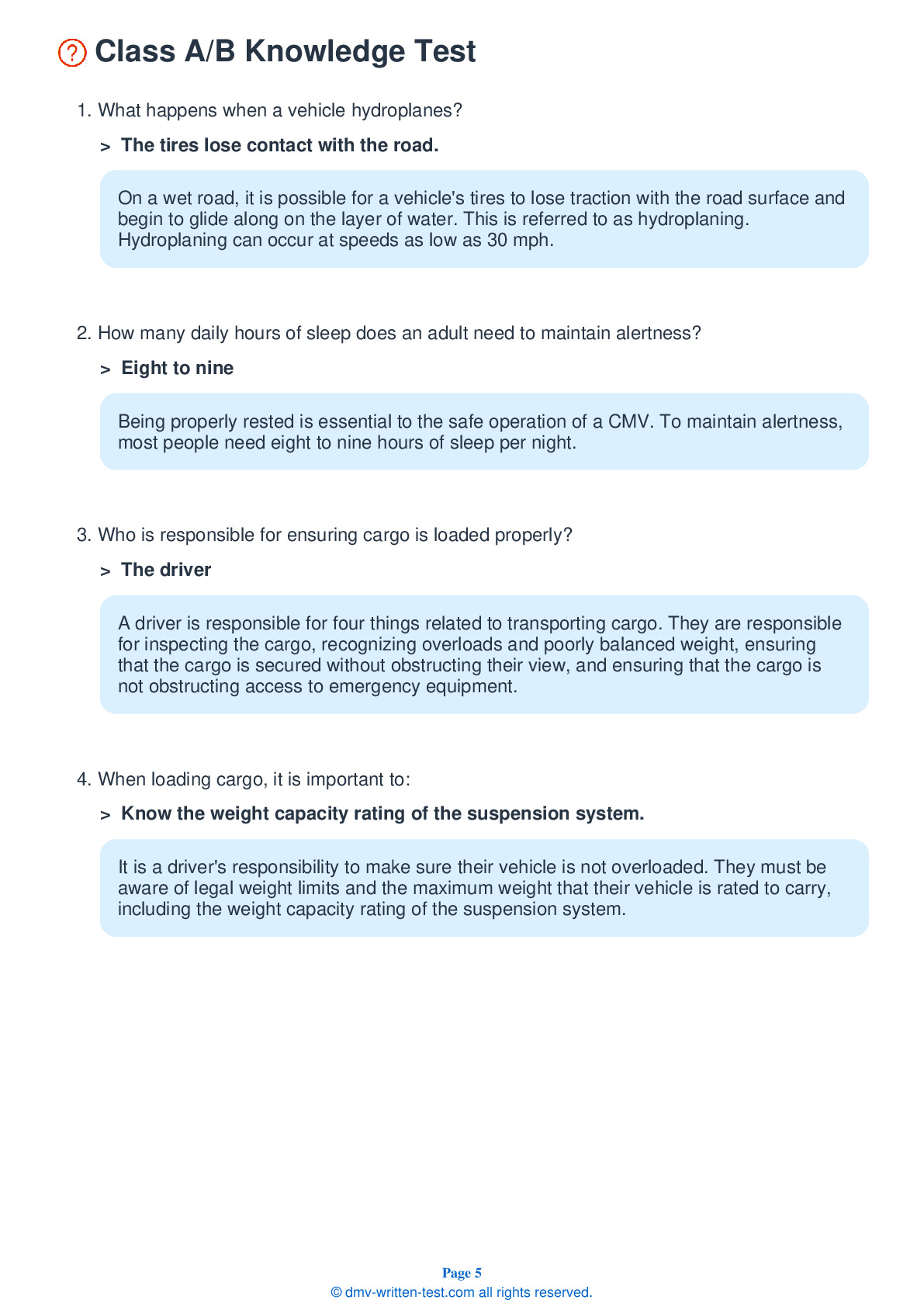Combination
All applicants who are applying for a Class A CDL should be prepared to take the Combination test. This test covers information found in Section 6 of the Commercial Driver License Manual. Section 6 provides the information needed to safely operate tractor-trailers, doubles, triples, and straight trucks with trailers. The test is made up of 20 multiple-choice questions, and applicants will need to correctly answer a minimum of 16 questions to pass. The Combination test is not a replacement for the Double/Triple endorsement test.
Number of Question
Passing Score
1. If a trailer begins to jackknife, the driver:
Explanation
If a trailer begins to jackknife, you should release the brakes and allow the trailer wheels to regain traction with the road. Do not apply the trailer hand brake to attempt to straighten out the rig because the application of brakes is what caused the wheels to lock in the first place.
2. Combination vehicles:
Explanation
Driving combination vehicles requires more skill than driving single commercial vehicles. Combinations are generally longer, generally heavier, and are more vulnerable to rollover.
3. Before a trip, you can make sure air flows to all trailers by:
Explanation
Before a trip, ensure that air in the air brake system reaches all trailers. Do this by waiting for air pressure to build, then sending air to both the emergency and service lines and opening the shut-off valves on the rear of the last trailer. If air escapes from the shut-off valves in the rear of the combination, the air is being supplied to the entire vehicle.
4. If a load is placed on one side of a trailer, the trailer:
Explanation
Positioning the weight of a load on one side of a trailer may cause the trailer to lean to that side, increasing the risk of a rollover during turns and lane changes.
5. When coupling, after you've connected the air lines to the trailer, you should:
Explanation
Correctly following the steps to couple and uncouple trailers is vital to safely operating a combination vehicle. After connecting the air lines to the trailer while coupling, you should supply air to the trailer.
6. Before beginning a trip, you should:
Explanation
Before a trip, you should ensure that air reaches all air brakes on all trailers by opening up the rear emergency line and service line shut-off valves and listening for escaping air. Close both shut-off valves before beginning to drive.
7. The service air line is often controlled by the foot brake and is attached to the ____ valves.
Explanation




